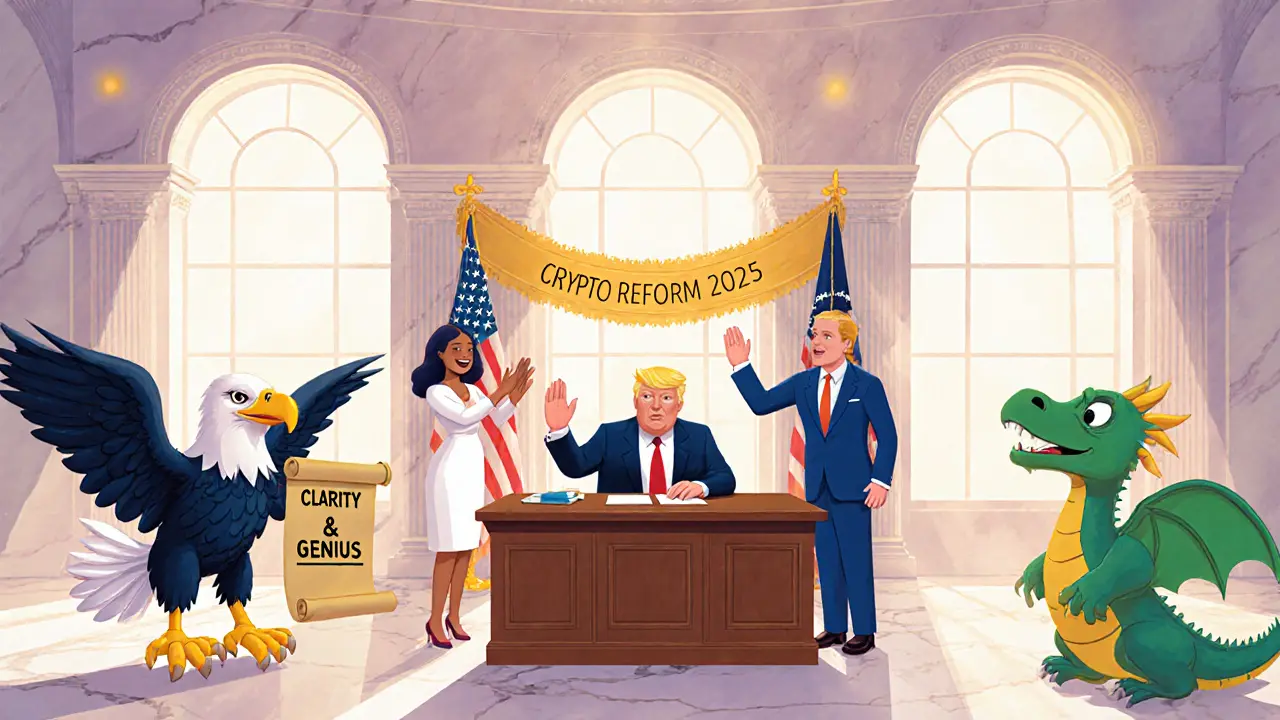CLARITY Act – What It Means for Crypto Users and Companies
When working with CLARITY Act, a legislative framework that pushes for transparency, consumer protection, and clear reporting standards in cryptocurrency markets. Also known as Crypto Transparency Act, it requires market participants to disclose token metrics, adhere to anti‑money‑laundering rules, and keep detailed transaction records for regulators. In plain terms, the act says "if you trade, invest, or run a platform, you need to be open about what you’re doing," which directly shapes how airdrops are announced, how exchanges operate, and how miners choose where to set up shop. This first paragraph sets the stage: the CLARITY Act is the backbone that connects compliance, tax, sanctions, and jurisdiction decisions for anyone in crypto.
Key Areas Shaped by the CLARITY Act
One major pillar is Regulatory Compliance, the process of following laws like AML, KYC, and reporting duties enforced by the CLARITY Act. Compliance influences airdrop safety – projects that meet the act’s disclosure standards are far less likely to be scams, and traders can spot red flags early. Another linked entity is Crypto Tax Reporting (FBAR), the requirement for U.S. persons to file foreign bank and financial account reports for crypto holdings. The act pushes platforms to provide users with clear tax documents, reducing the risk of $100,000 fines for missed FBAR filings. Sanctions Enforcement, the government’s use of trade bans and financial controls that affect crypto flows in restricted regions also falls under the act’s umbrella; it forces exchanges to screen users in countries like Iran or Russia, which directly ties to posts about VPN usage and sanction‑driven adoption. Finally, Mining Jurisdiction, the choice of country based on energy costs, tax regimes, and regulatory clarity for crypto mining operations is guided by the act’s push for transparent policy environments, helping miners pick locations with stable legal frameworks.
All these pieces—compliance, tax reporting, sanctions, and mining location—form a network that the CLARITY Act tries to make visible and predictable. Below you’ll discover deep dives into airdrop mechanics, mining‑friendly countries for 2025, VPN risks in Iran, stablecoin analysis, and even how specific tokens like Ozonechain or XTUSD fit into the regulated landscape. The collection gives you practical steps, safety checklists, and real‑world examples of the act in action, so you can stay ahead of the rules and make smarter crypto decisions. Ready to see how the CLARITY Act shapes each of these topics? Let’s explore the articles that break down the details.
How US Crypto Laws Evolved in 2025: The CLARITY and GENIUS Acts Explained
Explore how the 2025 CLARITY and GENIUS Acts reshape US crypto regulation, defining digital commodities, investment contracts, and stablecoins.





